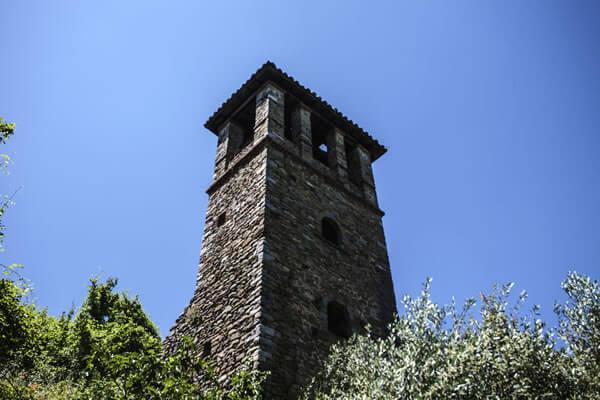Castle of Gaiche

Immersed in the greenery, isolated at 437 meters above sea level, Gaiche is famous for the statute of 1318, the oldest in Umbria, and for having given birth, in 1732, to the one who will become blessed Leopoldo, belonging to the order of minor friars. The origin of the toponym is not certain: from the Germanic term Castrum Galcorum; from the Latin Glaucus, Glauco, Greek mythological deity, protector of sailors and fishermen (venerated in Trasimeno), or from the Saracen word Gaytus with the meaning of commander.
Of the castle of Gaiche remain the remains of the walls and the four perimeter towers, one of which is used as a civic tower. The various rooms of the castle have been renovated and transformed into houses for tourist use, preserving the medieval atmosphere. Although almost the entire village is privately owned, it is possible to walk around the walls and in the small square framed by the well, as they belong to the municipality.
The Church of San Lorenzo
The Church of San Lorenzo leaves the visitor who sees it for the first time speechless, as it presents itself as "a church within a church".
Dated 1391, only to be overturned for the first time in 1583, it revealed itself to its inhabitants in all its extraordinary nature only after the shocks of the "Assisi earthquake" with damage to the central wall, and the appearance of the original masonry structure, behind the altar and precious frescoed niches. The impact is incredible, as the primitive church was much lower than the current one, so the original perimeter wall was incorporated and walled up together with the roof and the vaulted bell tower, preserved in an amazing way. The frescoes that can be glimpsed are partly compromised, but in the undamaged parts, they have very bright colors and a trait that reveals artists of the highest level. The brick wall has loopholes, therefore we are in the presence of a perimeter wall and the visible niches are in different positions and sizes indicating, in all probability, their non-contemporaneity or subsequent alterations. The style of the latter seems to be of Byzantine style. On the right side of the facade, on the other hand, we find wall paintings of a completely different style which indicate a later date, around the sixteenth century.
Essays on the left wall reveal that the decoration continues in the rest of the structure to this day, still covered by plaster. On the right side of the facade, on the other hand, we find wall paintings of a completely different style which indicate a later date, around the sixteenth century. Essays on the left wall reveal that the decoration continues in the rest of the structure to this day, still covered by plaster. On the right side of the facade, on the other hand, we find wall paintings of a completely different style which indicate a later date, around the sixteenth century. Essays on the left wall reveal that the decoration continues in the rest of the structure to this day, still covered by plaster.
The simple stone facade is characterized by a central door, with jambs and architrave in pietra serena, surmounted by a beautiful terracotta rose window. The rectory, currently being restored, will be used as a place of spiritual retreat for traveling pilgrims.